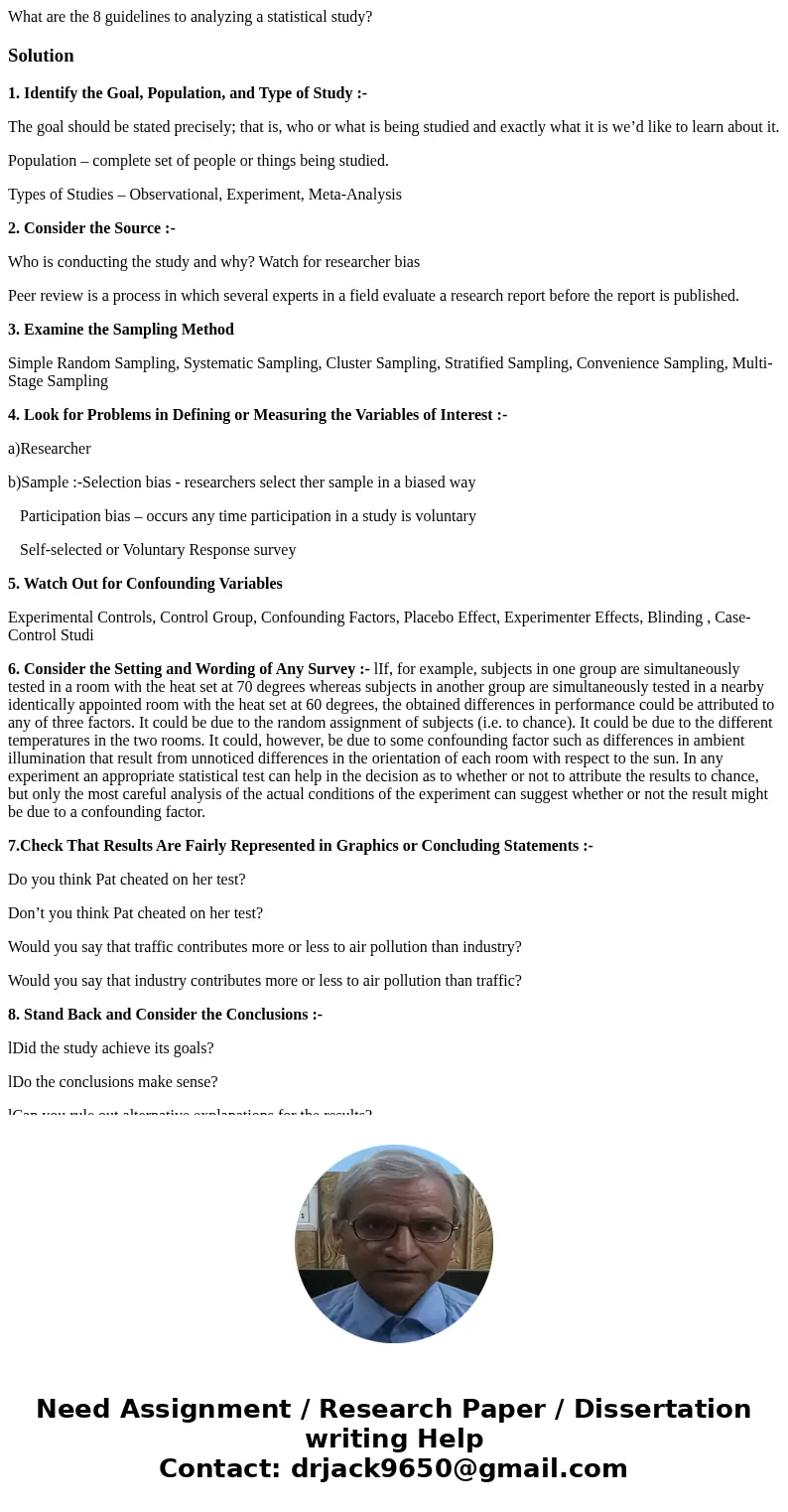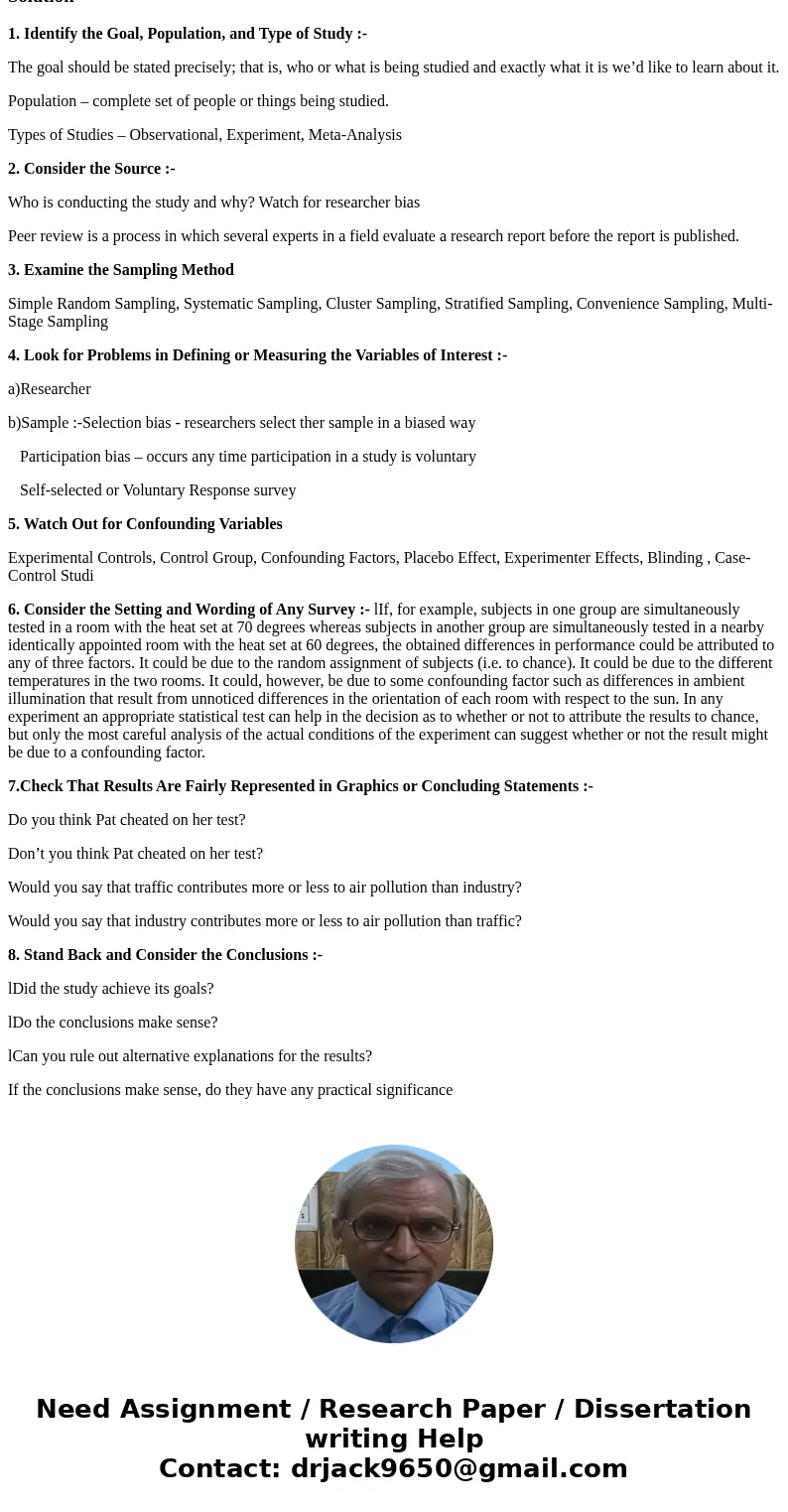What are the 8 guidelines to analyzing a statistical studySo
What are the 8 guidelines to analyzing a statistical study?
Solution
1. Identify the Goal, Population, and Type of Study :-
The goal should be stated precisely; that is, who or what is being studied and exactly what it is we’d like to learn about it.
Population – complete set of people or things being studied.
Types of Studies – Observational, Experiment, Meta-Analysis
2. Consider the Source :-
Who is conducting the study and why? Watch for researcher bias
Peer review is a process in which several experts in a field evaluate a research report before the report is published.
3. Examine the Sampling Method
Simple Random Sampling, Systematic Sampling, Cluster Sampling, Stratified Sampling, Convenience Sampling, Multi-Stage Sampling
4. Look for Problems in Defining or Measuring the Variables of Interest :-
a)Researcher
b)Sample :-Selection bias - researchers select ther sample in a biased way
Participation bias – occurs any time participation in a study is voluntary
Self-selected or Voluntary Response survey
5. Watch Out for Confounding Variables
Experimental Controls, Control Group, Confounding Factors, Placebo Effect, Experimenter Effects, Blinding , Case-Control Studi
6. Consider the Setting and Wording of Any Survey :- lIf, for example, subjects in one group are simultaneously tested in a room with the heat set at 70 degrees whereas subjects in another group are simultaneously tested in a nearby identically appointed room with the heat set at 60 degrees, the obtained differences in performance could be attributed to any of three factors. It could be due to the random assignment of subjects (i.e. to chance). It could be due to the different temperatures in the two rooms. It could, however, be due to some confounding factor such as differences in ambient illumination that result from unnoticed differences in the orientation of each room with respect to the sun. In any experiment an appropriate statistical test can help in the decision as to whether or not to attribute the results to chance, but only the most careful analysis of the actual conditions of the experiment can suggest whether or not the result might be due to a confounding factor.
7.Check That Results Are Fairly Represented in Graphics or Concluding Statements :-
Do you think Pat cheated on her test?
Don’t you think Pat cheated on her test?
Would you say that traffic contributes more or less to air pollution than industry?
Would you say that industry contributes more or less to air pollution than traffic?
8. Stand Back and Consider the Conclusions :-
lDid the study achieve its goals?
lDo the conclusions make sense?
lCan you rule out alternative explanations for the results?
If the conclusions make sense, do they have any practical significance


 Homework Sourse
Homework Sourse